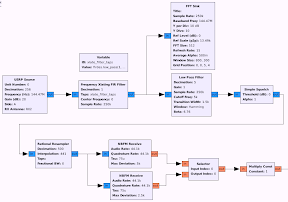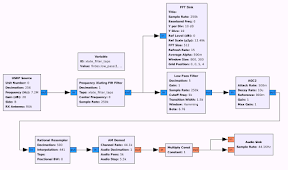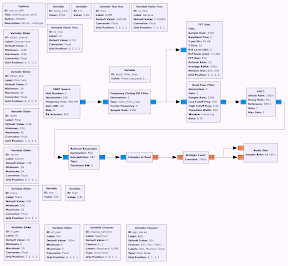arduino time
google search
Arduino GPS Board time
My Custom GPS Clock
By: Bertrand Zauhar, VE2ZAZ
Last updated: 25/07/2011
For many years I had wished to get an accurate clock that I could trust, a clock that would set itself and always be on time. I own an "atomic" clock (WWVH-derived) but in Eastern-Canada we are a bit on the fringe in terms of WWVH radio reception, especially if the clock is located in the basement. I needed a better solution. So I decided to make my own accurate clock based on a plain vanilla GPS unit, which will always provide the right time. Nothing outstanding here, but the end result is quite satisfactory.
The intent I have with this page is to give you ideas on how to make your own accurate GPS clock, as opposed to giving you a spoon-fed recipe. Please contact me if you need more info.
http://ve2zaz.net/Bat_Cycler/Bat_Cycler.htm
http://ve2zaz.net/GPS_Clock/GPS_Clock.htm
http://ve2zaz.net/GPS_Clock/UTC_Clk.c
Options - Option 34 Network Time Protocol (NTP) / Precision Time Protocol (PTP) Server
http://www.arbiter.com/catalog/options/details.php?opt=114
https://en.wikipedia.org/wiki/Clock_synchronization
NTP (
NTP: The Network Time Protocol)
http://playground.arduino.cc/Code/NTPclient
http://www.openntpd.org
http://www.abnormal.com/~thogard/ntp/
GPS time (UTC) to local time conversion using Arduino
by JeonLab
http://www.instructables.com/id/GPS-time-UTC-to-local-time-conversion-using-Arduin/
Welcome to ntp.org, home of the Network Time Protocol project.
This page is home for the NTP Project (R&D). This web site, and all pages directly contained within, are in the public domain. Some portions of this site may be copyrighted by other authors. Please contact the webmaster with any questions regarding copyright. The NTP software distribution is copyrighted, as described in the
NTP copyright page.
NTP is a protocol designed to synchronize the clocks of computers over a network.
http://www.ntp.org
GPS
http://www.gpsinformation.org/dale/nmea.htm#GSV
http://www.nmea.org
GPS time
https://github.com/mike-rankin/GPS_Board
https://github.com/allendav/GPSClock
UTC time
UTC – The World's Time Standard
Coordinated Universal Time (UTC) is the basis for civil time today. This 24-hour time standard is kept using highly precise atomic clocks combined with the Earth's rotation.
http://www.timeanddate.com/time/aboututc.html
The Difference Between GMT and UTC
Greenwich Mean Time (GMT) is often interchanged or confused with Coordinated Universal Time (UTC). But GMT is a time zone and UTC is a time standard.
The Royal Observatory in the UK.
©timeanddate.com
Although GMT and UTC share the same current time in practice, there is a basic difference between the two:
GMT is a time zone officially used in some European and African countries. The time can be displayed using both the 24-hour format (0 - 24) or the 12-hour format (1 - 12 am/pm).
UTC is not a time zone, but a time standard that is the basis for civil time and time zones worldwide. This means that no country or territory officially uses UTC as a local time.
- Analysis NMEA sentences and granting GPS data in C structures
- Generate NMEA sentences
- Supported sentences: GPGGA, GPGSA, GPGSV, GPRMC, GPVTG
- Multilevel architecture of algorithms
- Additional functions of geographical mathematics and work with navigation data
Time, Clock, and Calendar Programming In C
NET Framework DateTime Structure
The dateutil module provides powerful extensions to the standard datetime module, available in Python 2.3+.
FreeBSD Ports Collection Index - The FreeBSD Project
Captain NMEA Project
gpsLogger 1.8
gpsLogger is a simple program which monitors a serial port for data from a Global Positioning System (GPS) receiver (NMEA format).
gpsLogger "publishes" the current position to shared memory where other client applications can "subscribe" to read the current GPS position. A publish/subscribe application program interface API is defined in the "
gpsPub.h" file in the
gpsLogger source code distribution. The NRL Multi-Generator (MGEN) test tool set uses this methodology for embedding GPS position information in messages it generates. This tool set has been used for mobile wireless network performance evaluation and is available from
http://mgen.pf.itd.nrl.navy.mil.
The open source Calendar and Contacts Server project is a standards-compliant server implementing the CalDAV and CardDAV protocols. It provides a shared location on the network allowing multiple users to store and edit calendaring and contact information.
CalDAV is an Internet standard allowing a client to access scheduling information on a remote server. It extends the WebDAV (an HTTP-based protocol for data manipulation) specification and uses the iCalendar format for the data. The protocol is defined by
RFC 4791. It allows multiple clients access to the same information thus allowing cooperative planning and information sharing. Many server and client applications support the protocol.
CardDAV is an address book client/server protocol designed to allow users to access and share contact data on a server. The CardDAV protocol is defined by
RFC 6352.
Sub-projects
The following sub-projects are hosted with CalendarServer:
The Library of Congress » Standards » Extended Date Time Home
This website describes the current effort to develop a reasonably comprehensive date/time definition for the bibliographic community, as well as other interested communities, and submitting it for standardization or some other mode of formalization, for example a W3C note or an amendment to ISO 8601.
Draft Specification
The GNU C Library
Date and Time on the Internet: Timestamps
This document specifies an Internet standards track protocol for the Internet community, and requests discussion and suggestions for improvements.
Please refer to the current edition of the "Internet Official Protocol Standards" (STD 1) for the standardization state and status of this protocol. Distribution of this memo is unlimited.
This document defines a date and time format for use in Internet protocols that is a profile of the ISO 8601 standard for representation of dates and times using the Gregorian calendar.
Real Time Clock with Alarm Option using AT89S52 and DS1307 IC
8051 Microcontroller (AT89s51) based Seven Segment Display Digital Clock
Adding a Real Clock Calendar to your Arduino UNO
The Arduino UNO doesn’t have a little coin-battery-powered 'Real Time Clock' (RTC) module, which keeps time even when the power is off, or the battery removed.
So in this project we will show you how to add a RTC Click shield from Mikroelektronika, without the use of iron solder or breadboard.
This is possible using a Click Shield for Arduino UNO ( MIKROE 1581 ) from Mikroelektronika, easily found on RS Components RS SN 823-1883 and one RTC Click shield RS SN 820-9832 . You should own an Arduino UNO ( RS 715-4081 ).
Arduino GPS clock using NMEA protocol
The Need for a Date and Time Class for Arduino



